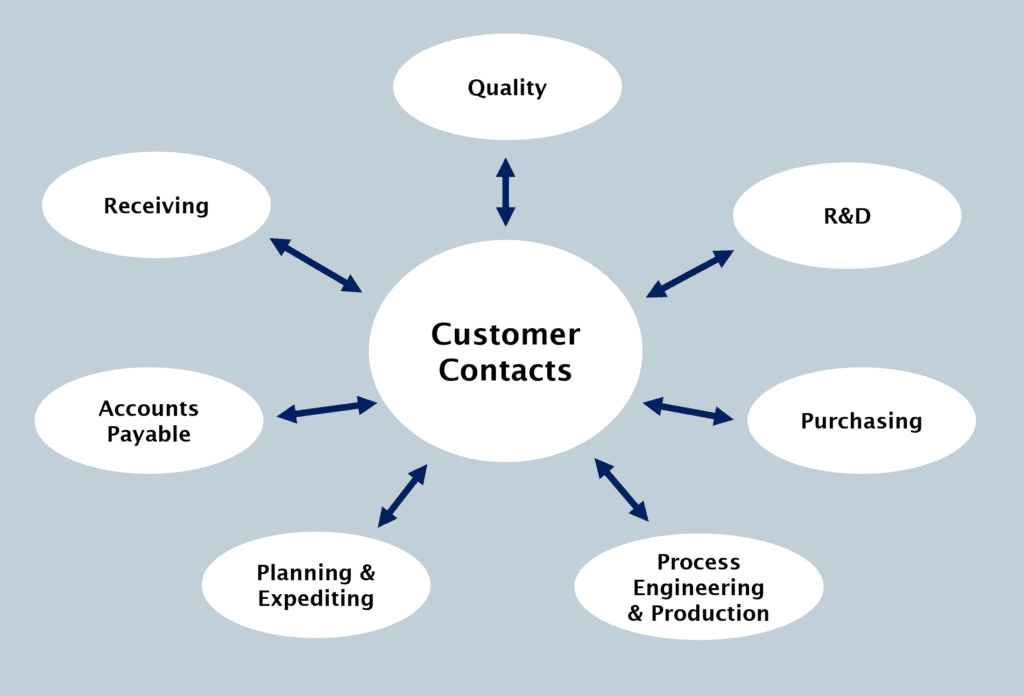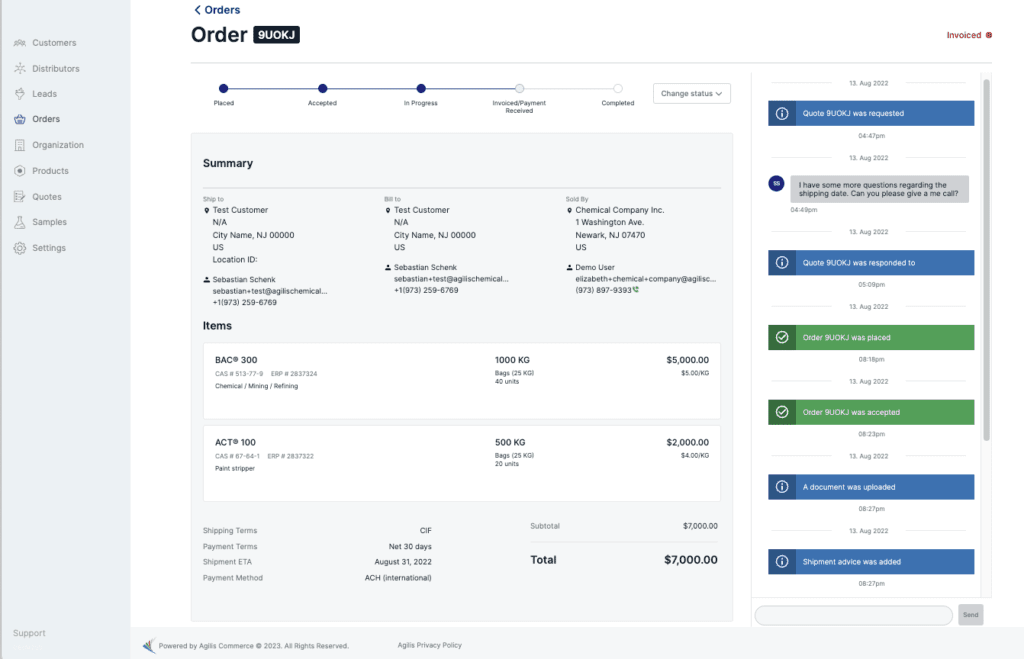Table of Contents
Digital strategy has become a common industry catchphrase. In reality, digital strategy and all of its semantic offshoots (i.e., digitization, digitalization, digital engagement, etc.) should serve as implementation tools of your overall business strategy. While proponents have prepared many well-developed visions of a future that digital can enable, it can be difficult to know where to start.
Revisit Corporate Goals and Resources
Whether you are launching a new digital effort or evaluating next steps for existing activities, it is important to first revisit your business strategy and overarching goals. Are you targeting aggressive growth? New markets? Market share capture? Profit enhancement? Before jumping in with digital tools, be sure you know exactly what you aim to accomplish.
Next, consider what initiatives you can implement in support of those goals. If your business strategy is focused on growth, for example, you may work to identify new or adjacent markets, focus on new product development for existing markets, or develop activities to increase brand awareness. If one of your goals is to improve profitability, you could identify ways to lower costs related to customer acquisition and retention, look at improving operational and manufacturing efficiencies, or perhaps target strategic price increases.
Finally, explore how digital tools could potentially help with these various initiatives. Are your executives seeking tailored information by market or customer function? Does your workforce or customer base need 24/7 access to information? Are there ways your company can minimize human effort?
Digital tools are certainly available that can help you with any or all of these goals. Prior to making an investment, however, you need to also consider what resources you already have, how they are being used, and what could make them better. With a full understanding of your current tools and processes, keeping your business strategy in mind, you will be able to explore the various offerings in the marketplace that may augment the existing corporate structure and resources.
During your search, be sure to consider how new digital tools might integrate with your current ecosystem. For example, a new tool must be able to interact cleanly with your customer relationship management (CRM) and/or enterprise resource planning (ERP) systems to maximize effectiveness and minimize the need for personnel resources. In support of that goal, you must also evaluate the best timing and methods used to insert human interactions.
Focus on the Customer
Various digital tools are available to help facilitate nearly every business strategy and function. As a full discussion of each type of tool is beyond the scope of this column, I would like to focus on customer-related needs. After all, none of your other goals matter without customers.
Your company likely interacts with customers through numerous departments and entities, potentially including field sales (direct or manufacturer’s representatives), distribution (perhaps channel specific), customer service, technical support, and shipping, to name just a few. The contact points that arise from these interactions are similarly varied, and each one requires specific messaging and action items (see Figure 1).

To further complicate matters, some of these contact points might not be targets for your initial messaging but will be critical to customer retention, clean engagements, and smooth operations. Though tailoring printed information to each “customer at the customer” is too laborious and expensive, digitizing your messaging is repeatable and can be as simple or complex as your needs dictate.
Customer Acquisition
Today’s initial customer communications often happen digitally. From services like MailChimp or Constant Contact to social media platforms like LinkedIn to your own websites, messaging can be custom configured to communicate with not only your target customer/account but with the individual function at your customer. For example, while robust field support and data supporting your products will underlie messaging to most functions, you might choose to highlight:
- Multi-substrate capability for the design or product engineer
- Speed of cure or ease of application for the process engineer
- Cost effectiveness and product availability/proximity for purchasing, planning, and expediting
You want to spark interest that leads to action by the customer, but what do you want them to do next to further engagement? Should they go to your website? If so, will you direct them to the home page or a specific landing page, and what will they find there?
How many times have you followed a link only to discover no content related to the information that had been highlighted in the outreach? The last thing you want to do is create demand that your competition will fulfill because you did not. Effective engagement begins with how you provide information and lead customers through various interactions with your company. Broken links, out-of-date websites, misleading or insufficient information, contact difficulties, and dozens of additional issues will all be reasons for them to seek your competition.
Let’s consider an example. If part of your business strategy involves looking at adjacent markets, you can more readily test your messaging and market response with a measured digital plan that includes actions such as:
- Restructuring data sheets with details needed by the new market (e.g., adhesion values for new substrates or market-specific packaging)
- Creating informative, easy-to-navigate landing pages on both your corporate website and on your transactional website (and/or a digital marketplace)
- Targeting social media and advertising messages to the new market(s)
- MEASURING!
Digital tools enable you to check how effective your actions are at each stage. A transaction—the ultimate goal—probably won’t happen if these steps (and likely others) are not effectively executed.
Customer Retention
In addition to satisfying the expectations of sales and marketing targets, you must meet the needs and wants of contact points in your existing customers’ organizations, such as planning and expediting, receiving, accounts payable, and quality. Your digital tools can help you both on outbound proactive communication and with collecting customer feedback.
A digital tool such as a custom transactional website can automate information such as shipping dates and methods, billing (including customer-specific requirements), and compliance information (e.g., safety data sheets and certificates of compliance).

(Image courtesy of Agilis Commerce.)
Analytical tools can also focus on factors that keep your customers happy and engaged. Digital processing allows you to flag occurrences that might negatively impact your customers, including:
- Credits – incorrect pricing or shipping, quality issues
- Shipping – multiple inquiries, expedited shipping, rerouting, customs, hazardous material issues, lost packages
- Billing and receivables – invoice and purchase order mismatch, terms mismatch, misapplied discounts
A properly configured custom transactional website can enable you to automatically flag and collate these types of occurrences. The individual occurrences should trigger a human action, and the collated information should inform your appropriate team to address the root causes as a preventative measure.
As mentioned previously, digital tools ideally trigger a human contact at a time and in a way that the interaction will be most effective. Reaching out to help through a problem is much more effective than apologizing after the fact, so think about how you can use digital tools proactively.
Maximize the Rewards for Effective Business Strategy
Companies must constantly balance risk and reward as they develop their effective business strategy. The proper implementation of digital tools can lower risks and increase potential rewards for both you and your customers in numerous ways:
- Speaking the same language as your customer lowers their perceived risk.
- Analyzing what messaging is working and what isn’t lowers your risk.
- Acquiring new customers increases your rewards.
- Minimizing issues related to fulfillment lowers costs for both you and your customer, which reduces risk and increases the reward for everyone.
- Establishing a smooth, trouble-free relationship with your customers reduces the risk of them changing suppliers, which in turn increases your potential rewards.
To ensure success, fully explore the most effective timing and method(s) for your digital tools to trigger various human interactions. Digital tools should integrate with existing systems and processes, always in line with the overall business strategy, such that the entire operation works effectively with minimal involvement of your personnel while achieving maximum customer impact.
For additional information, contact the author at jswope@chemquest.com.
Read in ASI.

